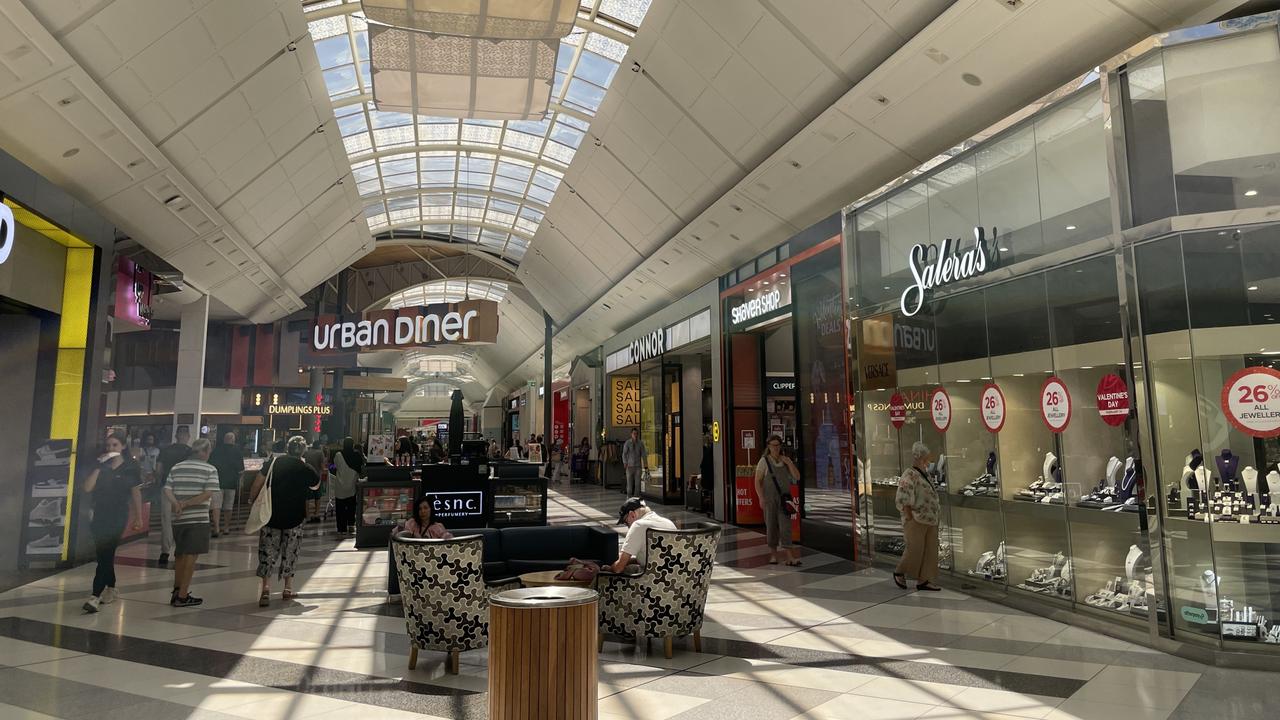Napier St Bridge, Footscray: Third truck of the year hits bridge
Trains are delayed and traffic banked up at a notorious Footscray road bridge, where a concrete truck has become stuck. It’s now the site of three crashes in two weeks, despite VicRoads spending $1.6 million on safety upgrades.
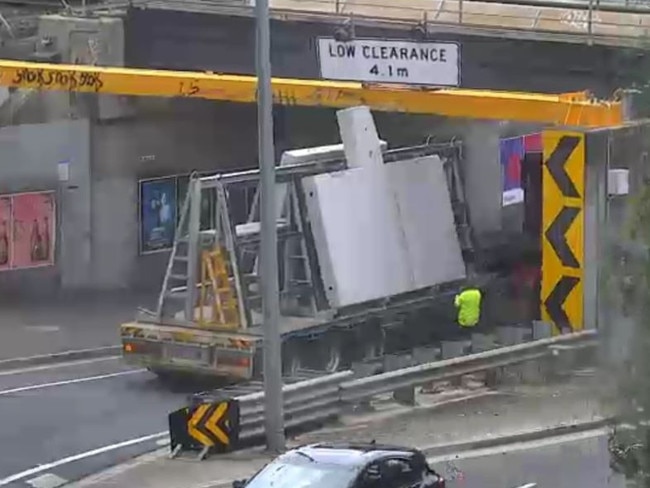
North West
Don't miss out on the headlines from North West. Followed categories will be added to My News.
The number of trucks hitting the notorious low-slung Napier St bridge is on track to exceed last year’s tally, with a third truck in two weeks smashing into the 4m bridge today.
A concrete truck struck the safety gantry just before the bridge about 12pm.
A VicRoads spokesman said police arrived about 12.15pm and closed Napier St city bound, which turns into Buckley St after the bridge.
Napier St has now been reopened, but he warned traffic congestion remains heavy.
READ MORE:
YET ANOTHER TRUCK HITS NOTORIOUS NAPIER ST BRIDGE FOOTSCRAY
CONTAINER TRUCK SMASHED INTO THE NAPIER STREET BRIDGE IN FOOTSCRAY
HI-TECH AUTOMATIC DETECTION SYSTEM TO BE INSTALLED TO STOP TRUCKS FROM HITTING BRIDGE
The Werribee/Williamstown lines are delayed from Footscray to Newport.
Bridge engineers are on their way for a routine safety check before trains can resume.
The truck was carrying slabs of concrete and remains stuck under the bridge.
Footscray: Expect delays on Napier street after a truck, believed to be carrying concrete slabs, hit the rail bridge. @VicTraffic says police are diverting vehicles at McNab Avenue, sending drivers towards Hopkins Street. #7News pic.twitter.com/JuNEO785xj
— 7 News Melbourne (@7NewsMelbourne) 21 February 2019
The truck is the third this year to hit the bridge, despite VicRoads splashing more than $1.6 million last year on an early warning and safety system.
Metro recorded seven incidents of trucks or containers striking the bridge in 2018, despite a VicRoads installation of a $1.1 million electronic overheight vehicle detection and warning system on both sides of the underpass early last year.
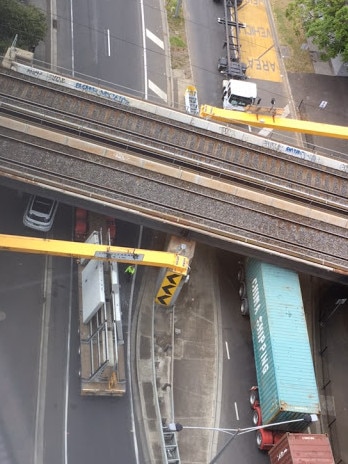
In 2016, the roads authority also completed a $550,000 project worth of realignment works on the Napier St bridge to reduce the risk of a container being dislodged.
On February 6 the rail bridge was closed after a truck carrying a shipping container got stuck.
On December 21 last year the bridge was actually struck twice in one day.
The incidents have reignited calls for trucks to be banned from the road.
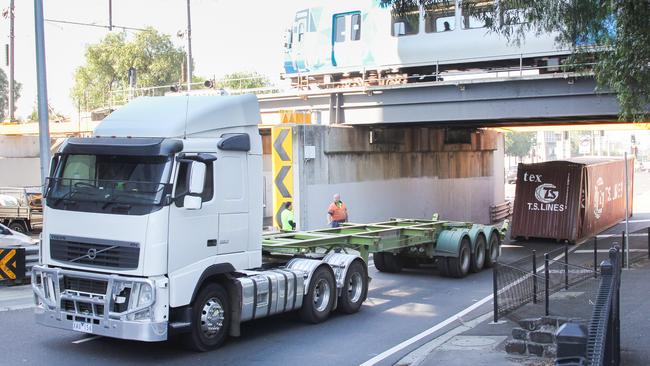
The 4m-high bridge has been struck 54 times since 2012, causing road closures and train delays often lasting hours because in each case the overpass undergoes a structural engineering assessment.
Maribyrnong Truck Action Group (MTAG) president Martin Wurt said while getting trucks off local roads was the only permanent solution, driver education in the short term would help.
“If you have a car license you can have a truck heavy vehicle license in 24 hours,” he said.
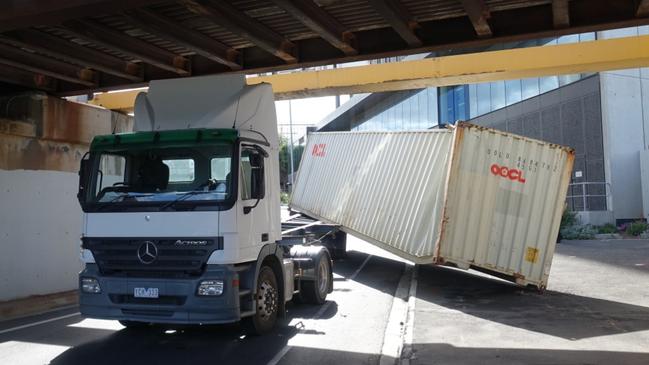
VicRoads north west director Vince Punaro said it was disappointing when the bridge was hit because truck drivers were putting others lives at risk.
“Ultimately, it is the responsibility of all drivers to be aware of the height of their vehicles and plan their journeys accordingly,” he said.
There are also 28 advance warning signs and five height detection devices around the bridge.
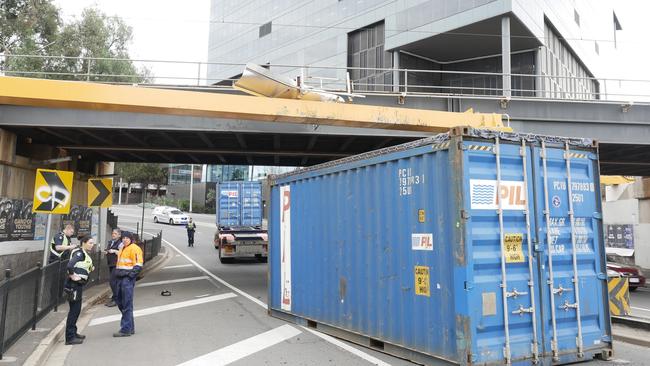
The current penalty for failing to obey a low clearance bridge warning sign is $738.
Last year, MTAG and the Victoria Transport Association came up with a radical plan to adjust truck curfews in Yarraville by giving more road access to newer trucks with cleaner engines and advanced safety features.
The plan also includes a driver training and accreditation program so more drivers are aware of low bridges, school crossing curfews, and general curfew hours.
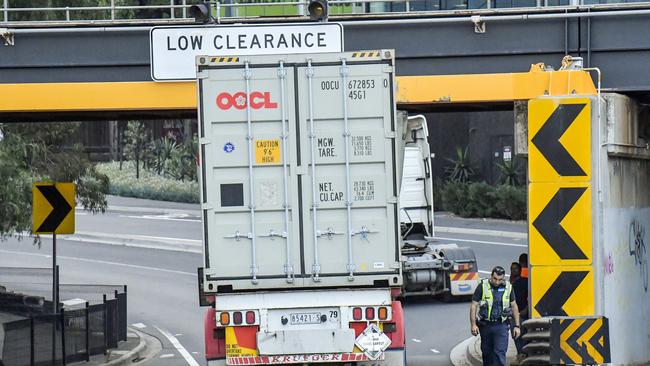
The two groups have renewed calls for the government to implement the plan.
The State Government has promised a 24/7 truck ban for some inner west streets when the West Gate Tunnel opens in 2022, including Buckley St, which is the continuation of Napier St after the bridge.
VTYA chief executive Peter Anderson said it was the responsibility of every driver to know its vehicle, whether it was a caravan, bus or commercial heavy vehicle.
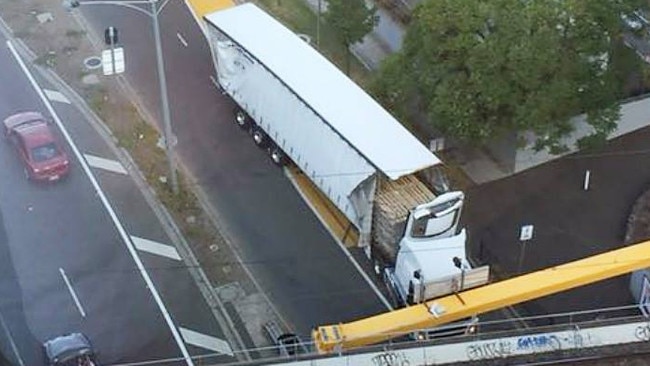
“They also need to plan ahead and study and know their route, including bridges and other low obstructions, to avoid collisions, and not rely on GPS navigation because it does not factor in the height of the vehicle when mapping optimum routes,” Mr Anderson.
VicRoads director Fatima Mohamed said the automatic vehicle detection systems switched on in March last year was helping reduce bridge strikes.
“Over the past 12 months, there has been a 30 per cent reduction in bridge strikes compared to the previous 12 months,” she said.
MORE STORIES:


